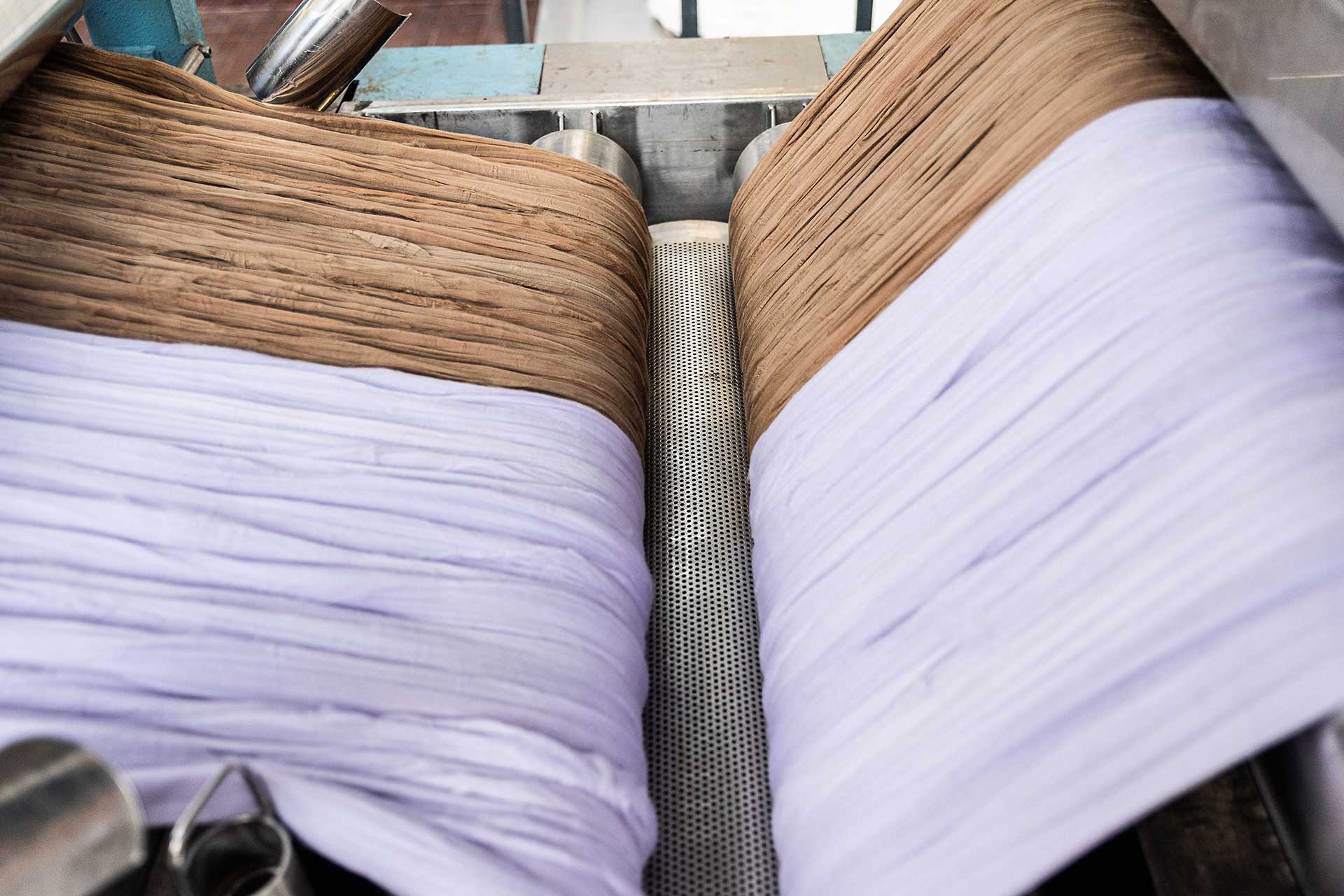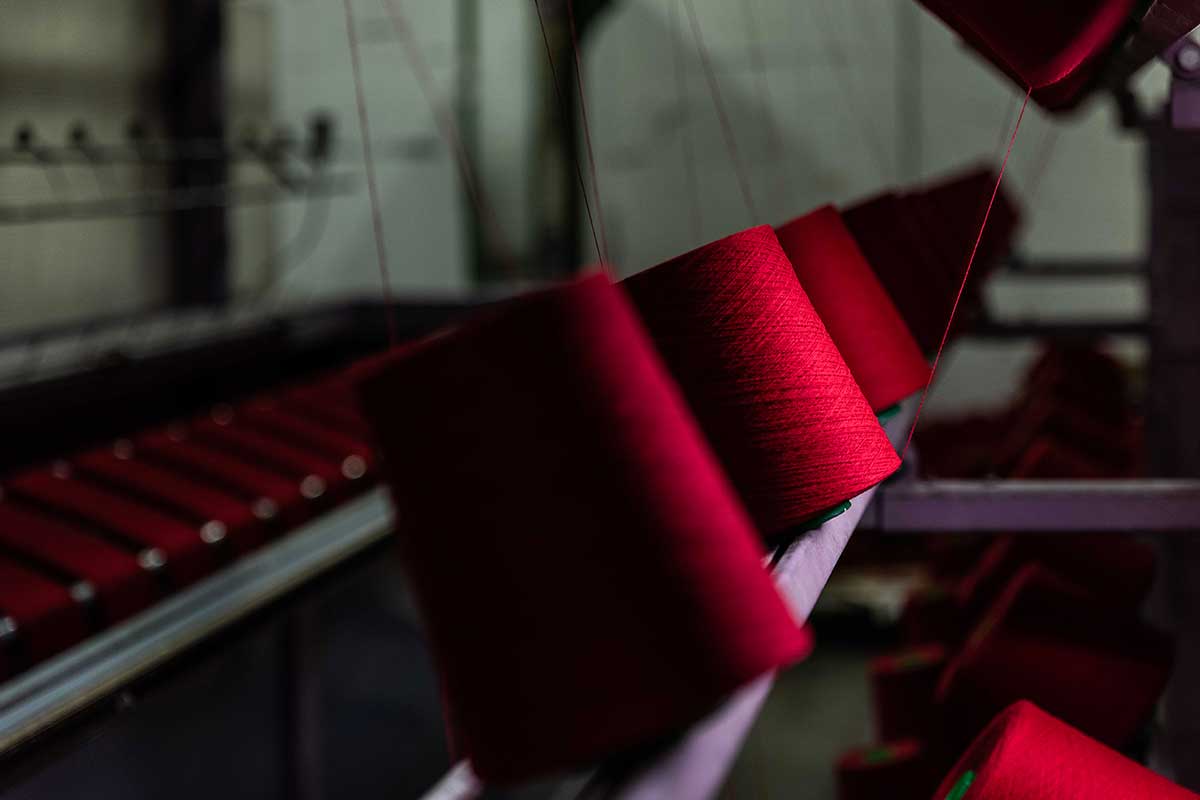Natural fibers can’t guarantee sustainability by default. Reporting D–house roundtable Natural vs Synthetic , and a conversation with Nicola Mattassoglio from Zegna Baruffa Lane Borgosesia
Partial reportage from the meeting Natural fibers vs Synthetic hosted by D-house Laboratorio Urbano, in collaboration with Planet Life Economy Foundation, on 16th of July 2021.
The mono–material is the most viable solution: Nicola Camurri, Client Advisor for Altavia Italia
«The introduction of specific materials cannot be considered positive or negative in itself, but it’s their use that must be considered positive or negative» states Nicola Camurri, Client Advisor for Altavia Italia, during a meeting hosted by D-house. The approach to the issue has to understand which are all the harmful compounds that we can deprive the product of». Once the purpose of a garment has been established, technical or for everyday use, then it is possible to understand what kind of material and fiber to use, keeping in mind at the same time how to recycle it at the end of its life cycle.
There is a long set of most virtuous materials, Camurri continues. «The mono–material is the most viable solution» but there are machines that can help to recycle certain mixed–materials: the result depends on the percentage of each material and how it has been treated before the production of the item. Paolo Masoni, Chief of Ecoinnovazione, explains that responsibility is spread between producers, in the first and second steps, and consumers, in the last step.
«The main activities and processes that impact the environment are the whole Production of the material part, for one quarter of the cycle, and the dyeing process, within the Production of the item part, for a ten percent». Then there is the transportation part, with an impact of thirteen percent. It can be seen that «three–quarters of the environmental impact is due to other activities than material production».
The sustainability level of a textile item: Paolo Masoni, Chief of Ecoinnovazione
Comparing the impact of organic cotton, conventional cotton, and polyester, it emerges that polyester has a better impact in terms of acidification of the oceans, for the quantity of Hydrogen it releases, but it is worse in terms of CO2 release and use of fossil resources. And for technical clothing, polyester or other synthetic materials can’t be replaced with natural ones without influencing their purpose. Comparing the general performances of natural and synthetic fibers helps to have an idea of the impact of the same amount of fiber on the environment.
Results have to be recalculated though in terms of quantity of use per material. An organic cotton t-shirt is an everyday item that could last one or two years, before being discharged and replaced, while a synthetic parka, or winter jacket, will last five to ten years, or even more. «We have to take into consideration garment usability. Talking about environmental issues, we have to consider the entire product cycle, and not only the raw materials, since the materials impact is a twenty-five percent over the total, while the remaining part is related to the lifecycle», continues Masoni. Then comes the recycling part of a garment used. Mono–material garments can be recycled by default, being them natural or synthetic, while mixed materials require to be analyzed one by one, being a mix of two or more natural fibers or of natural and synthetic fibers.
Nicola Mattassoglio, Security and Environment Delegate Attorney for Zegna Baruffa Lane Borgosesia
Synthetic fibers are chemicals per se, but what is not told, by brands that say that their garments are sustainable just because they are made of natural fibers, is that natural fibers have to be treated with chemicals to perform following industry standards. It depends on the kind of chemicals and dyes used in the spinning mill and how they are discharged, the level of sustainability that a natural fiber can reach. Nicola Mattassoglio, Security and Environment Delegate Attorney for Zegna Baruffa, brings the example of its company to explain how sustainability can be reached in a wool spinning mill.
«The wool is purchased, then arrives at our three mills in Borgosesia, and from there production begins, all the way to our finished product». At Zegna Baruffa, production is verticalized within the mills. «This implies being able to say that in our companies we have the possibility to control and to trace all the chemical products used within the production cycles», states Mattassoglio, addressing the chemicals discharging issue. In a spinning mill, the processes in which chemicals are used are the so-called wet processes, i.e. the yarn dyeing phases.
ZDHC – zero discharge of hazardous chemicals
Wet processes are the core of this kind of mill, where they can’t avoid using chemicals. In 2019 Zegna Baruffa started a project with 4sustainability to understand how to reduce their impact. «We applied the protocol that helps to eliminate toxic and harmful substances from the production cycles, through the methodological principles of ZDHC – zero discharge of hazardous chemicals». ZDHC is a program, launched in 2011, that gives guidelines to the fashion industry about chemicals’ use, among which there’s the MRSL – manufacturing restricted substance list. ZDHC has its own portal where chemical suppliers record their products, which are then evaluated according to their performance in terms of quality and sustainability».
«Zegna Baruffa, as a company, guarantees that majority of its chemical inventory is registered in the ZDHC gateway, from which the level of performance can be monitored. «From there, we ensure that at any point in the production process you can see what products are being used. A customer buys a certain color yarn from us, which they then use for a sweater. The end consumer could ask our customer for all the yarn technical characteristics, if the customer marked which yarn was used. We can tell you not only the raw material used, but also what chemicals were used, where they were bought, who the supplier is, and even, in some cases, even the lot number».
The 4sustainability protocol
The Chemical Inventory is managed by a Chemical manager, a person who has been trained in–house. The role of the Chemical manager has acquired this name since the application of the 4sustainability protocol: «previously, this figure existed for a safety at work issue, now it is also a sustainability issue, like most of the practices already in place in the company». Working with the chemical manager is another figure, trained in–house, who is in charge of the water purification. The two of them collaborate on the Chemical inventory and its management.
In the Borgosesia mill, water is taken from the river, used in production, purified, and then returned to the river. The Chemical manager and the Purification worker collaborate because the purification process can be improved by improving the incoming chemistry. «This can be done by taking care that the Chemical inventory, and the substances used in each step of production, are getting less and less impactful. The ZDHC protocol put in place, and monitored by 4sustainability, helps to improve the chemistry, ultimately making the whole production cleaner» explains Mattassoglio.
Experimentation is carried on in the mill
«In the last collection we did, we launched a series of new dyes, for which we also have the exclusive rights to dye natural fibers of animal origin. They don’t contain metals, no allergens, no aromatic amines. They have a performance that allows our finished product to be non–toxic». Experimentation is carried on in the mill, trying to apply the dyes to different kinds of yarns with different compositions and blends, including cashmere and silk. «As a company of a certain size, we have to be sure that they have a good yield from a brightness point of view, as well as having good technical performance, soundness and replicability. We cannot afford to have differences between different productions, as there can be using completely natural products that by their nature do not have this replicability index».
The sustainability level of mills that spin wool, silk, cashmere, and other natural fibers it’s not given by the kind of material they treat but by their approach to it, «an approach that involves a whole series of choices» concludes Mattassoglio. «These choices go from the local area, and the choice to remain in Italy, to the use of chemistry, and taking certain paths within the company in terms of training, investment and improvement».
Lampoon reporting: sustainability starts from yarn production
Yarn production is a first step towards the creation of the final item. It matters to follow practices by sustainability principles in this step. To not nullify the effort, the garment has to be treated by those principles during its all-life cycle, including the final moment of use by the ending customer. When talking about sustainability in the fashion industry, the main factors that the final customer considers about a garment are its certifications and the fabrics it is made of.
This approach is the result of years of communication and marketing practices carried forward by brands, according to which a fabric made of natural fibers is ok for the environment because it is possible to discharge it, while synthetic fibers stand at the opposite of the recycling virtuosity scale. What lacks in that kind of communication, is the information that a fiber’s impact on the environment has to be calculated considering all the processes that it undergoes, from the spinning mill to the fabric.
Zegna Baruffa Lane Borgosesia
A spinning mill, with three industrial plants in northern Italy. Founded in 1870, it spins mainly wool, of different kinds, cashmere and silk.
Nicola Camurri
Client advisor of Altavia Italia, a business to consumer communication agency. Paolo Masoni is a nuclear engineer and chief of Ecoinnovazione, a research spin-off of ENEA (Italian National Agency for New Technologies, Energy and Sustainable Economic Development), created to make available to the production system and public administrations the methods and tools developed to address issues of sustainability and environmental assessments in all areas.




















